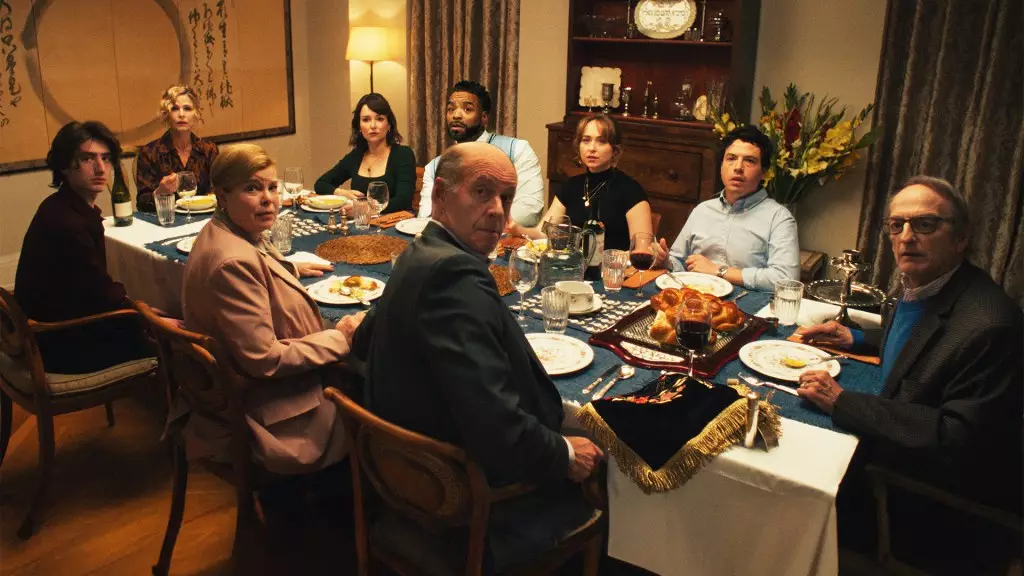In a landscape dominated by blockbuster franchises and high-budget productions, the recent performance of indie films like Menemsha Films’ *Bad Shabbos* underscores an intriguing shift in the entertainment industry. Surpassing the modest milestone of $1 million at the U.S. box office, this film’s sustained success on limited screens exemplifies a broader, often overlooked trend: the resilience and potential profitability of niche cinema. Rather than churning out superficial spectacles aimed solely at mass audiences, this pattern showcases the value of thoughtful storytelling, regional appeal, and niche markets. It suggests that, contrary to mainstream narratives, small films can carve out significant space in theaters—if they are crafted with authenticity and leverage word-of-mouth marketing.
The strategy of gradual rollouts — opening in select markets, then expanding based on audience reception — allows indie films to build momentum organically. Such an approach minimizes risk for distributors while maximizing engagement with core demographics. This trend aligns with a shift in consumer preferences: audiences increasingly seek authentic experiences, relatable characters, and stories that resonate with their community or cultural identity. These qualities, once deemed secondary or niche, now serve as primary drivers for box office performance.
Why Authenticity Matters in a Distracted Age
Critically examining these successes reveals that authenticity is trumping spectacle. *Bad Shabbos*’s enduring run — stretching for months across multiple theaters — demonstrates that viewers are craving content they can relate to, especially when it pokes fun at cultural and religious identities with humor and sincerity. The film’s core theme, an interfaith couple navigating their families’ first meeting during Shabbat, taps into universal themes of love, misunderstanding, and cultural bridging. Yet it does so with specific cultural references that foster a sense of community and shared experience.
This nuanced storytelling not only appeals to niche audiences but also challenges Hollywood’s tendency to prioritize broad appeal and sensationalism. The film’s success underscores a critical insight: in a crowded digital landscape, genuine storytelling and cultural authenticity can foster word-of-mouth that sustains a film’s viability long after its initial release. It is an effective counterargument to industry skepticism about small movies’ commercial potential, revealing that the current cultural climate values sincerity over spectacle.
Market Implications and Cultural Reassessment
From a market perspective, the continued vitality of indie films represents a strategic calibration. For distributors and theaters, it emphasizes the importance of curating diverse, authentic content that can serve specific communities. The ability of boutique films to generate ongoing attendance suggests that the traditional Hollywood monopoly on cultural meaning is loosening. Smaller productions are not just supplementary; they are becoming central to a vibrant theatrical landscape, challenging the monopoly that big studios once held over cultural dialogue.
Particularly revealing is the sustained engagement of *Bad Shabbos* in cities like Boston, Los Angeles, and New York — markets traditionally dominated by big-name blockbusters. This indicates that a dedicated audience can support a film over extended periods if the content appeals to their sensibilities. Moreover, the film’s modest opening gross paired with its extended, ongoing runs illustrate that profitability in indie filmmaking is less about initial spectacle and more about sustained engagement and positive word-of-mouth.
From a political standpoint, this trend can be viewed as a democratization of storytelling. It highlights the importance of cultural representation and pluralism in cinema, which is crucial for a society that values individual identities and local voices. Yet, it also raises questions about the sustainability of this model and whether it can be scaled without diluting authenticity or fragmenting audiences further.
While critics may dismiss these indie successes as anomalies or flukes, a critical perspective suggests they are symptomatic of deeper shifts in cultural consumption and industry economics. The rise of authentic, community-driven films demonstrates that there is a demand—perhaps even a hunger—for content that reflects real life, cultural complexity, and humor rooted in specific identities. For center-right observers, this trend highlights a potential avenue for fostering a more diverse, inclusive cultural landscape—one that respects tradition and authenticity while remaining adaptable to modern tastes.
In essence, the resurgence of the indie film scene is less a passing fad than a reflection of a society seeking meaningful, relatable stories amid the chaos of mass media. It challenges the Hollywood monopoly, urges a reevaluation of what constitutes commercial success, and signals a healthier, more balanced entertainment ecosystem—if stakeholders are willing to embrace it.

